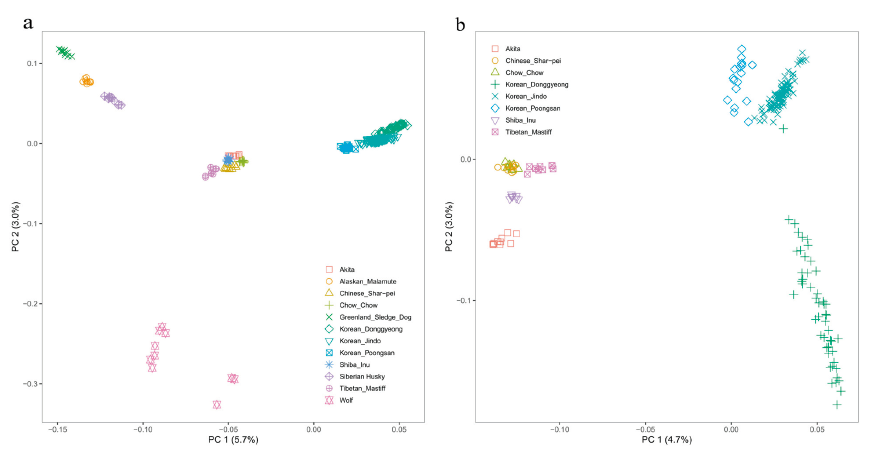Abstract
Korean Donggyeong dogs hold the unique position with their short tails and the longest known history among indigenous Korean breeds. To fully elucidate the evolutionary process and breed composition of indigenous Korean dogs, we conducted an extensive genome-wide survey of 169 breeds on a dataset of 146,300 single nucleotide polymorphisms. Here we show that Donggyeong dogs share the significant amount of haplotypes with other indigenous Korean breeds, and a substantial degree of sharing was observed with other Asian breeds, notably Akita from Japan. Furthermore, we found the relatively high level of genetic diversity in a once-endangered breed, which possibly reflects the lack of concerted efforts of intense breeding practices that have created most modern dog breeds with desirable traits. Together, these results emphasize that characterization of diversity is an essential step towards understanding the genetic history and structure of Donggyeong dogs.
Figures & Tables

Fig. 1. (A) PC1 of 235 dogs and composed of North America, East Asia breeds and wolves. Confirming population structure of breeds located in near-by geographical locations. (B) PC2 graph of East Asia breeds separated from PC1.


